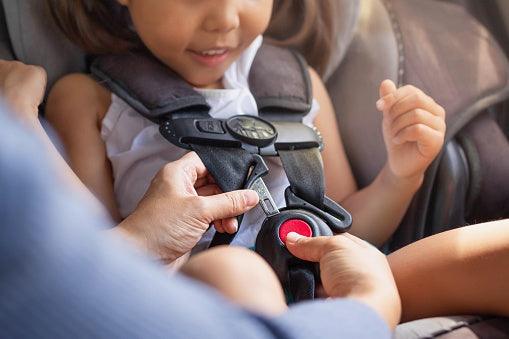A car seat is one of the most important gear purchases you're going to make as a new parent.
It is one of the only products you will ever buy for your child that has the potential to actually save their life. Not only that, but you can't bring baby home from the hospital without it!
Wondering where to start?
There are three basic types of car seats for infants and toddlers: rear-facing, forward-facing and convertible, which convert from rear to forward-facing. According to the American Academy of Pediatrics (AAP), children should remain in a rear-facing car seat for as long as possible, until they reach the highest weight or height allowed by their seat. (Previously, the AAP advised that children should remain rear-facing at least to age 2, but the latest recommendation removes the specific age milestone.)
As your child grows, you'll need to change the direction that his car seat faces and how he sits in it — and you may need to buy a new seat. Check out this age-by-age guide to keeping car travel safe for your little one.
Car Seats for Infants
There are two kinds of car seats for infants, and both kinds of seats are equally safe, so the kind you choose depends on personal preference. These are your options when buying a car seat for an infant:
Infant-only car seat
An infant-only car seat can be used until baby weighs 20 to 22 pounds or his head is within 1 inch of top of the seat. They are generally lighter in weight and designed to be portable.
Many parents prefer the convenience of an infant carrier because the seat can be removed from the car without having to unstrap and possibly wake a sleeping baby. The car seat base remains strapped into the vehicle; the carrier simply snaps in and out of the base.
Infant-only seats are also convenient because they can click onto a stroller base. So when shopping for an infant carrier, make sure to look for one that is also compatible with your stroller.
Convertible car seat
A convertible car seat may be used from birth, but infant-only seats fit small babies better. Choose one certified to face rear until baby weighs at least 30 pounds.
Convertible seats are a great option if you want a product that will last throughout the years since they can be installed as either a rear or forward-facing seat. Plus, most have limits that will allow children to ride rear-facing for 2 years or more.
However, convertible seats are not designed to be portable, instead they remain fixed in the car.
Car Seats for Toddlers
When your child outgrows the requirements of a rear-facing car seat, he should use a forward-facing car seat with a harness for as long as possible, until he reaches the height and weight limit. These are your options when buying a car seat for a toddler who has outgrown a rear-facing seat:
Forward-facing only car seat
Many forward-facing only car seats can accommodate children up to 65 pounds or more. Always make sure to refer to your actual car seat manual for maximum height and weight specifications! These recommendations are not universal for all car seats.
Combination car seat
This functions with a harness until the child reaches 40-65 pounds. After that, you can remove the harness and the car seat converts to a belt-positioning booster, which can be used for kids up to 80-100 pounds with your car's lap/shoulder belt.
Car Seats for Preschoolers
When your child has outgrown the requirements for a forward-facing car seat with a harness, he should transition to a belt-positioning booster with lap/shoulder belt in the car. This type of car seat fits kids up to 80-100 pounds, and in general, most kids need boosters from about age 3 or 4 to at least age 8.
Keep in mind that children need head support: Use a high-back booster if the car has a low backseat. A backless booster can be used if the car's seat has a headrest.
Once You've Bought Your Car Seat
Practice buckling the seat into your car before your baby's first ride. Make sure the harness straps fit snugly on your baby's body. Use the lowest harness slots for a newborn infant. Keep the straps in the slots at or below your baby's shoulders for the rear-facing position.
Make sure the harness straps fit properly over the shoulders and between the legs — this is very important. Dress your baby in clothes that keep legs free.
To fill empty spaces and give support, roll up a couple of small blankets and tuck them between your baby's shoulders and head, on both his right and left sides. If he still slumps down, put a rolled diaper between his legs behind the crotch strap. Don't put thick padding underneath or behind the baby.












